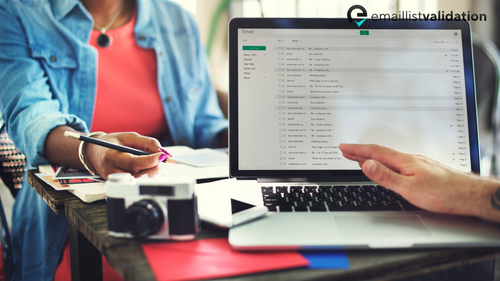As the world becomes increasingly digital, email has become a crucial part of our daily lives. Whether it's for personal or professional use, email is a convenient and efficient way to communicate with others. However, with the rise of spam and phishing emails, it's important to verify email addresses to ensure that the messages we receive are legitimate. In this article, we'll explore the importance of email verification and how it can benefit you.
What is Email Verification?
Email verification is the process of verifying the validity of an email address. This process involves checking if the email address exists, if it's active, and if it's not a spam or fake email address. Email verification is important because it helps to ensure that the emails you send and receive are legitimate and not spam or phishing emails.
Why is Email Verification Important?
Email verification is important for several reasons. Firstly, it helps to prevent spam and phishing emails from reaching your inbox. Spam and phishing emails can be harmful as they may contain viruses or malware that can damage your computer or steal your personal information. By verifying email addresses, you can ensure that the emails you receive are legitimate and not spam or phishing emails.
Secondly, email verification helps to improve email deliverability. When you send an email to an invalid or inactive email address, it can result in a bounce-back message. This can negatively impact your email deliverability rate, which is the percentage of emails that successfully reach the recipient's inbox. By verifying email addresses before sending emails, you can improve your email deliverability rate and ensure that your messages reach their intended recipients.
Lastly, email verification can help to improve your email marketing campaigns. When you send emails to invalid or inactive email addresses, it can result in a high bounce rate, which can negatively impact your email marketing metrics. By verifying email addresses before sending emails, you can improve your email marketing metrics and ensure that your messages reach your target audience.
How Does Email Verification Work?
Email verification works by checking the validity of an email address. There are several methods that can be used to verify email addresses, including:
1. Syntax Check: This method checks if the email address is properly formatted and follows the standard syntax for email addresses.
2. Domain Check: This method checks if the domain name in the email address exists and is active.
3. SMTP Check: This method sends a test email to the email address and checks if it's delivered successfully.
4. MX Record Check: This method checks if the email address has a valid MX record, which is used to route emails to the correct mail server.
5. Disposable Email Address Check: This method checks if the email address is a disposable email address, which is a temporary email address that's often used for spam or fraudulent activities.
There are several email verification tools available that can automate the email verification process. These tools use a combination of the above methods to verify email addresses and provide a report on the validity of the email address.
Benefits of Email Verification
There are several benefits of email verification, including:
1. Improved Email Deliverability: By verifying email addresses before sending emails, you can improve your email deliverability rate and ensure that your messages reach their intended recipients.
2. Reduced Bounce Rate: Verifying email addresses can help to reduce your bounce rate, which is the percentage of emails that are returned as undeliverable.
3. Improved Email Marketing Metrics: By verifying email addresses before sending emails, you can improve your email marketing metrics, such as open rates, click-through rates, and conversion rates.
4. Reduced Spam Complaints: Verifying email addresses can help to reduce the number of spam complaints you receive, which can negatively impact your email reputation.
5. Improved Data Quality: Verifying email addresses can help to improve the quality of your data by ensuring that you have accurate and up-to-date email addresses.
Conclusion
Email verification is an important process that can help to ensure that the emails you send and receive are legitimate and not spam or phishing emails. By verifying email addresses, you can improve your email deliverability, reduce your bounce rate, improve your email marketing metrics, reduce spam complaints, and improve the quality of your data. There are several email verification tools available that can automate the email verification process and provide a report on the validity of the email address. If you're not already verifying email addresses, it's time to start doing so to ensure that your emails are reaching their intended recipients.
FAQs
1. What is the best email verification tool?
There are several email verification tools available, including VerifyEmailAddress.org, Hunter.io, and Verifalia. The best tool for you will depend on your specific needs and budget.
2. How accurate are email verification tools?
Email verification tools are generally accurate, but there may be some false positives or false negatives. It's important to use multiple verification methods to ensure the accuracy of the results.
3. How often should I verify my email list?
It's recommended to verify your email list at least once a year to ensure that you have accurate and up-to-date email addresses.
4. Can email verification tools detect disposable email addresses?
Yes, some email verification tools can detect disposable email addresses, which are often used for spam or fraudulent activities.
5. Is email verification GDPR compliant?
Yes, email verification is GDPR compliant as long as you have a legitimate reason for processing the email addresses and you have obtained consent from the data subjects.



